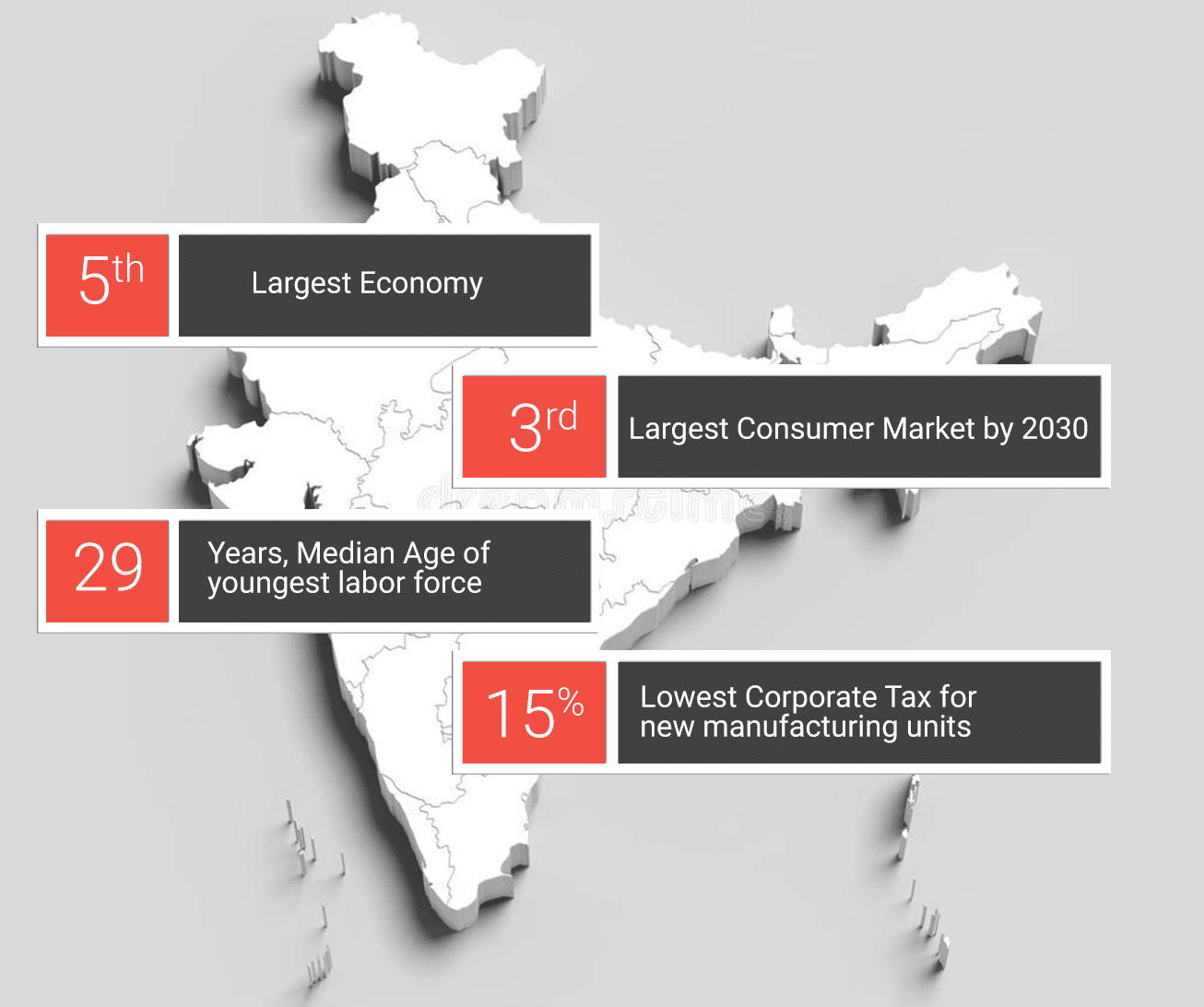The India Advantage

A large domestic market fuelled by rapid urbanization and rise in real GDP. Impetus and policies by the government for global businesses to make India their hub for international operations.
Come, find out what makes India special and why it figures prominently in strategic plans of all long-term, global businesses.
COVID-19 may have finally forced many companies, and entire industries, to rethink and transform their global supply chain model. One fact is beyond doubt: It has already exposed the vulnerabilities of many organizations, especially those who have a high dependence on China to fulfil their need for raw materials or finished products.
China’s dominant role as the “world’s factory” means that any major disruption puts global supply chains at risk. Putting that into context, over 200 of the Fortune Global 500 firms have a presence directly in Wuhan. A new Dun & Bradstreet study also estimates that 163 of the Fortune 1000 have Tier 1 suppliers (those they do direct business with) in the impacted area, and 938 have one or more Tier 2 suppliers (which feed the first tier) in this same impacted area.
Just because a company doesn’t have any direct suppliers in the impacted areas in China, does not mean that it is safe from disruption. Just how extensive the crisis is can be seen in data released by Resilinc, a supply-chain-mapping and risk-monitoring company, which shows the number of sites of industries located in the quarantined areas of China, South Korea, and Italy, and the number of items sourced from the quarantined regions of China.

